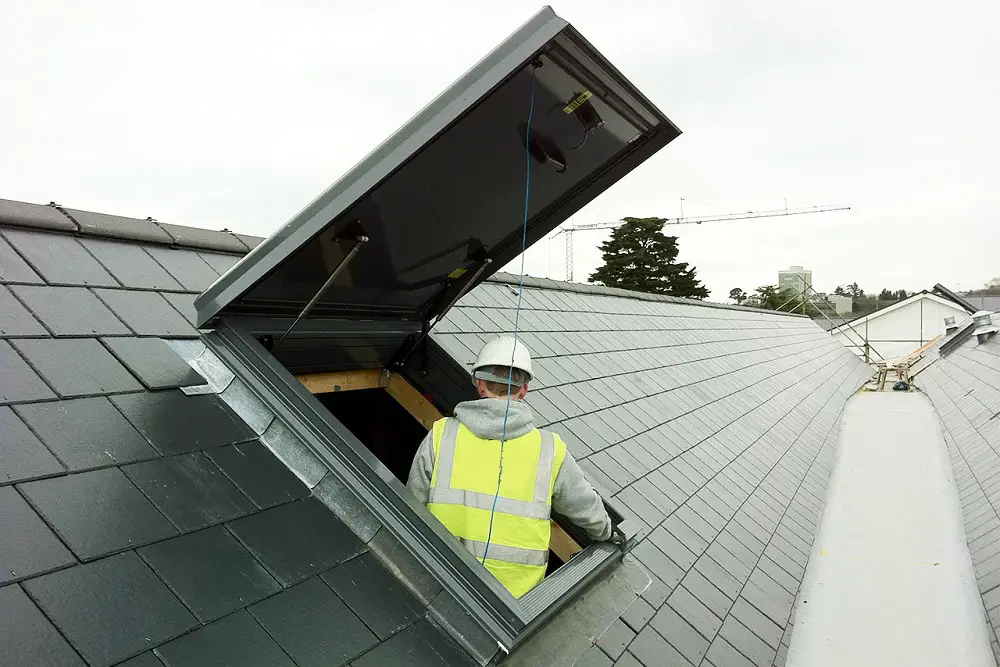When it comes to the design of a roof access hatch that provides smooth access to commercial roofs, you should explore key features before installation. The roof access hatch is one of many primary requirements for roofing projects. However, the models of this equipment have similar designs. For making internal access to commercial roofs safe, you can rely on this solution. As far as the design of hatches is concerned, you may come across the following options.
Sliding access
Hinged access
Things to Consider Before Choosing a roof access hatch
Pitch of the roof and design of the ceiling
Height for the floor to ceiling and vice versa
Reasons for which access to the roof is indispensable
Knowledge of the roofing material
Should the roof include a walkway with an access hatch
Checking the fire-rating and insulation of the system
If you are in two minds about choosing a suitable roof access hatch, you can come across various sizes, and powder-coated options resonate with the color of the roof. The sliding hatch is more accessible than its counterpart as it closes and opens with ease.
The Potential Features to Choose in Access Hatches
There are robust access hatches available today for the workers operating in the construction industry. Here is a list of powerful features to explore in a roof access hatch for workers.
The mechanism of opening and closing the lid should be convenient.
Sliding hatches are more ergonomic and easier to use, so you can choose the one the sliding option, which is easier to use.
Often coating of aluminum on steel lids outside strengthens the structure of the access hatch.
The reason to choose sliding hatches is to avoid the lid from shutting down due to high winds.
Selecting from the customized designs for access hatches.
Incorporating hand grabs into the guard rails around the hatch makes it convenient to move between the hatch and the roof.
It is essential to follow a proper plan and a suitable roof access hatch for workers to prevent the risk of falls when working on the roof.

Hinged or Sliding Access Hatches
The hinged access hatch is one of the options to look for when you need to install, and one of the reasons to choose this option is the automatic opening and closing of lids. However, the downside of the equipment is the struts operating, which includes the risk of leaking gas, damaging the lives of construction workers. Besides this, due to the angle of opening of this roof access hatch, wind can occasionally blow down the lid of the hatch. Whereas when it comes to sliding roof access hatch, then you don’t have to face such difficulties and it is easier to use.
Safety with Access Hatch
Using an access hatch helps the construction workers to access the roof quickly instead of using the ladder and protective equipment, such as safe access to reach the roof. There are standard sizes of hatches you can select to meet your needs. When workers need to access roofs for construction, the sliding roof hatches can make it easy to transfer the materials on to the roof. Along with the welded frame and robust structure of the access hatch, the workers can reach any area of the roof safely.
Things to Know
During the installation of the roof access hatch, remember to surround it with other safety components, such as guard rails and walkways. Furthermore, the structure should meet the specification of OSHA as well. Finally, you should check the competence of the access hatch installer and select a company with adequate experience and proper license. Try to look for licensed plumbers and qualified technicians to consolidate the work of installation of the equipment.
With these sets of options, you can easily choose the best roof access hatch. Make sure that it is of the right size and made from good quality material, thereby ensuring that it is safe to use.

Hey Alyssa, great article! I’m pretty sure I recognise the cover photo too. (Hint: It’s one of our roof hatches!).
In terms of roof hatch performance, thermally broken is a must-have option as far as we are concerned along with at least 75mm insulation for the best thermal performance. When fire rating is concerned they must be tested and certified to the appropriate standards.
A few other factors to consider include how the hatch is being accessed and what the user will be using it for E.g. If they are carrying a tool box for rooftop maintenance then a companionway ladder should be considered over a fixed vertical ladder. The companionway ladders will then affect the minimum roof hatch size required to ensure there is enough head room.
At the end of it all, there is more to a roof hatch then just a square box on the roof!